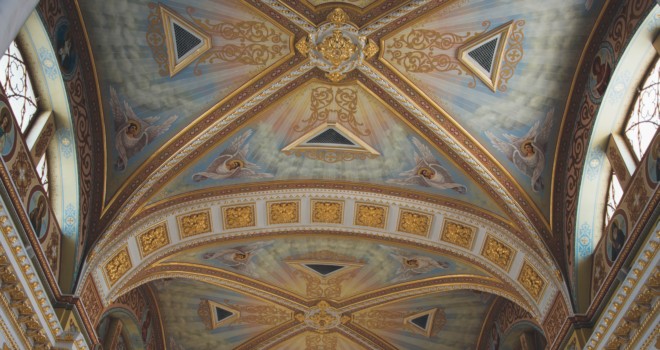I see the terrifying spaces of the universe that enclose me, and I find myself attached to a corner of this vast expanse, without knowing why I am more in this place than in another, nor why this little time that is given me to live is assigned me at this point more than another out of all the eternity that has preceded me and out of all that will follow me.
—Pensees, Blaise Pascal
A common argument against Christianity is often put like this: “The Christian way of looking at God and the universe doesn’t make any sense. Why all the wasted space? If mankind is the spiritual center of the universe, it certainly doesn’t look like it. By all observation, we seem to be the secretion of a mossy rock, flying around the backwater of an impossibly large and empty space.” This is less of a formal argument and more of a sentiment, but, all the same, it needs accounting for.
One of the great things about being Catholic, and about being human, is seeing the power that symbols have in explaining fundamental parts of our experience to us. God does not disdain to use imperfect, material things to convey transcendent truths to help us understand our place in the whole mess of things we call life this side of paradise. Thankfully, the Church in her wisdom understands this, and employs such signs all over the place. One such sign is the sanctuary lamp, or altar lamp; a little light that is often surrounded by colored glass and other ornamentation, which is always placed near the tabernacle in a Catholic Church. Why? On a very basic level, the light is on when the Master of the house is home. It’s a sign of hospitality that most people can understand easily. On another level, I think this gives us an answer to the problem we started with.
Anyone who has had the pleasure to pray in a church at night will understand what I mean. After a while, and as your eyes adjust to the darkness, you realize that the only light in the whole place comes from the altar lamp. From the sanctuary to the back of the nave, a vague semblance of shapes appear, depending on the style and architecture of the building; the high vaults of the ceiling, an organ, perhaps some stained glass, or a reredos crowned with a cross. The impression one gets, as a whole, is of an order that is shrouded in mystery. At the same time, all this is only visible by a light that signifies the presence of something, or someone, of much greater import than an ordered, but otherwise dark and mostly empty space.
In short, I don’t think that the medievals were too far off the mark when they likened the cosmos to a church. Why is the universe so full of empty space? Why are Catholic churches so full of empty space? The end of all creation is the end of all worship: to manifest the glory of God. When God spoke to Job out of the whirlwind, he said as much:
Where were you when I laid the earth’s foundation? Tell me, if you understand. Who determined its measurements—surely you know! Or who stretched the line upon it? On what were its bases sunk, or who laid its cornerstone, while the morning stars sang together and all the angels shouted for joy? (Jb 38:4-7)
If the empty space of the church is where the faithful sing the praises of God, what is the expanse of the universe but a church for the angels to sing? And what, then, is Earth, and the Church upon it, but an altar lamp announcing the presence of God in his creation?
✠
This article originally appeared on Dominicana, the Dominican student blog of the Province of St. Joseph, and is reprinted here with kind permission.
image: Photo by Daniil Kuželev on Unsplash















